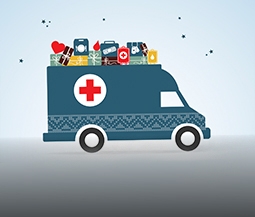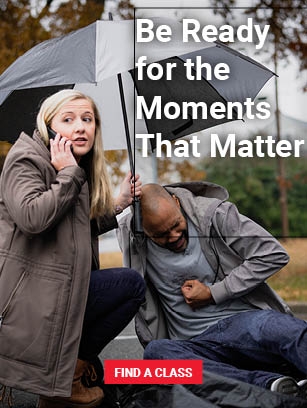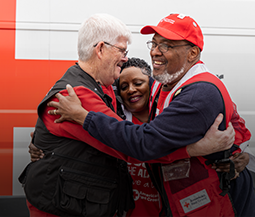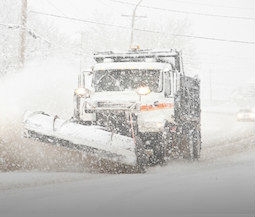Yet another atmospheric river is moving into California, putting almost the entire state under flooding alerts. The American Red Cross is monitoring the weather and has shelter locations and teams standing by to respond if necessary.
Millions of people could be affected as the storm brings as much as five inches of rain to the state, along with thunderstorms, strong winds and the possibility of landslides and tornadoes. The higher elevations could see as much as eight inches of rain. Heavy snow is expected in the Sierra Nevada and Shasta Siskiyous mountains, which could get as much as three feet of snow.
Officials are urging people to stay off the roads if possible and an evacuation warning is out for Santa Barbara County.
CLIMATE CRISIS Our changing climate has led to more frequent and intense disasters ravaging communities. Regarding atmospheric rivers, scientists warn the changes in our climate may increase their effects, leading to heavier rain and more destruction. This could mean millions to billions of dollars in flood damage. The American Red Cross is on the frontlines of disaster response, supporting families across the country who are struggling to cope with this humanitarian crisis. We see first-hand how more disasters are driving more people to seek assistance. Learn more here.
HELP KEEPING YOU SAFE The Red Cross issues the following steps people should follow to help them stay safe:
FLOODING SAFETY
Turn around, don’t drown. Stay off the roads. If you must drive and encounter a flooded roadway while driving, turn around and go another way.
If your neighborhood is prone to flooding, be prepared to evacuate quickly if necessary.
Follow evacuation orders and do not attempt to return until officials say it is safe to do so. .
If you are caught on a flooded road and waters are rising rapidly around you, get out of the car quickly and move to higher ground. Most cars can be swept away by less than two feet of moving water.
Head for higher ground and stay there.
Be especially cautious at night when it’s harder to see flooding danger.
Stay away from floodwaters. Beware of snakes, insects and other animals that may be in or around floodwaters and your home.
Keep children and pets away from hazardous sites and floodwaters.
POWER OUTAGE SAFETY
Use flashlights in the dark — not candles.
Don’t drive unless necessary. Traffic lights will be out and roads could be congested.
Turn off and unplug any appliances, equipment and electronics. When the power comes back on, surges or spikes can damage equipment.
Leave one light on, so you’ll know when power is restored.
If a power outage is two hours or less, don’t be concerned about losing perishable foods. During a prolonged outage, keep refrigerator and freezer doors closed as much as possible to protect your food.
Use perishable food from the refrigerator first. Then, use food from the freezer.
Perishable food is safe to eat when it has a temperature of 40 degrees Fahrenheit or below.
If the power outage continues beyond a day, prepare a cooler with ice for your freezer items. Keep food in a dry, cool spot and cover it at all times.
If you are using a generator, keep it dry and don’t use it in wet conditions.
Never use a generator, grill, camp stove or other gasoline, propane, natural gas or charcoal-burning device inside a home, garage, basement or other partially enclosed area. Keep this equipment outside and away from doors, windows and vents, which could allow carbon monoxide to come indoors.
Operate the generator on a dry surface under an open canopy-like structure, such as under a tarp held up by poles. Don’t touch a generator with wet hands.
Turn the generator off and let it cool down before refueling. Gasoline spilled on hot engine parts could catch fire.
Plug appliances directly into the generator. Never plug a generator into a wall outlet.
TORNADO SAFETY
Know the difference between a tornado watch and warning. A tornado watch means a tornado is possible. A tornado warning means a tornado is already occurring or will occur soon.
Know your community’s warning system, for example many areas use outdoor sirens.
Watch for tornado danger signs: dark and greenish clouds, a wall cloud or cloud of debris.
Bring your pets indoors and keep an eye on them.
If you have time, move or secure outside items that can be picked up by wind.
During a tornado warning, go to your safe place immediately.
Identify a safe place in your home to gather — whether it’s a basement, storm cellar or interior room on the lowest floor with no windows.
A small, windowless interior room or hallway on the lowest level of a sturdy building is the safest alternative.
If you live in a mobile home, find a safe place in a nearby sturdy building or vehicle. No mobile home is safe in a tornado.
If you’re outside, seek shelter in a basement, shelter or sturdy building.
If you cannot quickly walk to a shelter, immediately get in a vehicle and try to drive to the closest sturdy shelter. Remember to buckle your seatbelt.
Stay away from bridges or highway overpasses.
If strong winds and flying debris occur while driving, pull over and park. Keep your seatbelt on and the engine running. Put your head down below the windows, and cover your head with your hands and a blanket.
DOWNLOAD OUR APPS Download the free Red Cross First Aid app so you’ll know what to do if emergency help is delayed and the free Emergency app for weather alerts, open Red Cross shelter locations and safety steps for different emergencies. Choose whether you want to view the content in English or Spanish with an easy-to-find language selector. Find these and all of the Red Cross apps in smartphone app stores by searching for the American Red Cross or going to redcross.org/apps.
YOU CAN HELP people affected by disasters like flooding and countless other crises by making a gift to Red Cross Disaster Relief. Your gift enables the Red Cross to prepare for, respond to and help people recover from disasters big and small. Visit redcross.org, call 800-RED-CROSS (800-733-2767), or text the word REDCROSS to 90999 to make a $10 donation.












